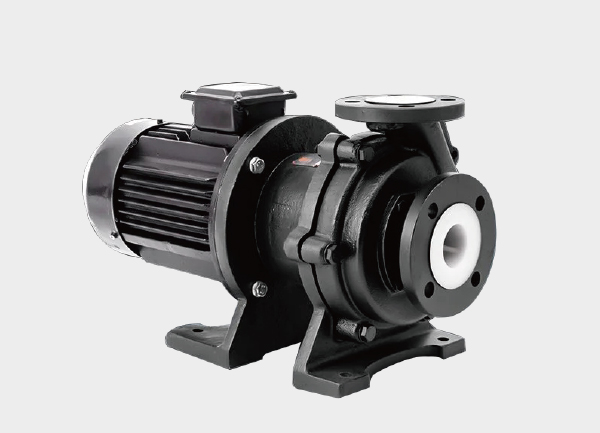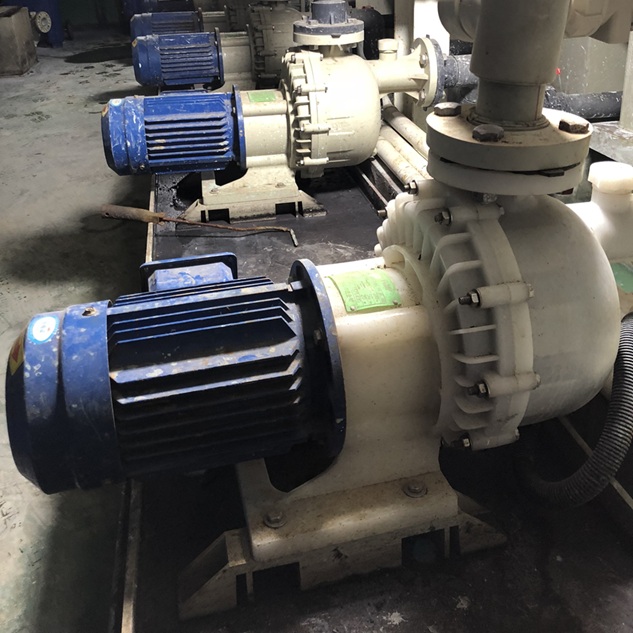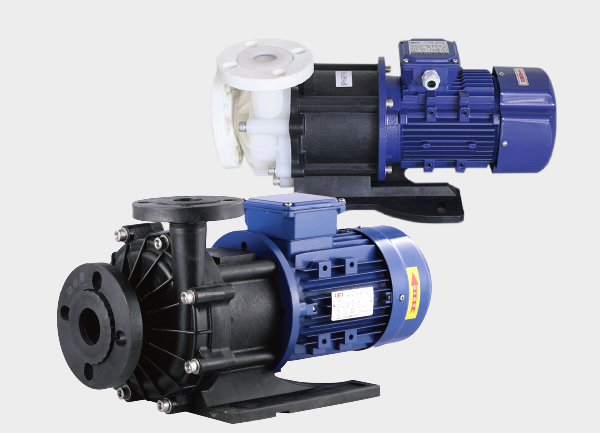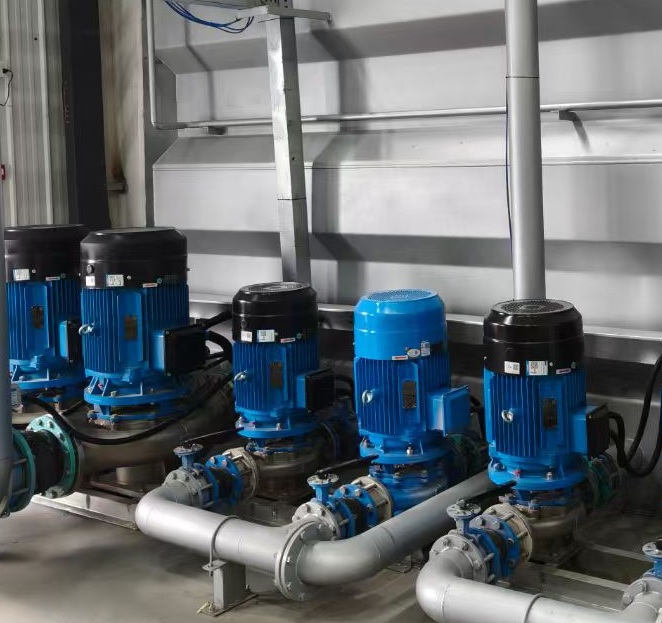Chemical dosing pumps are a core application form of metering pumps—essentially positive-displacement pumps designed to precisely control the delivery volume of fluids. They are primarily used to convey chemical agents (e.g., acids, alkalis, flocculants, disinfectants, corrosion inhibitors) to target process systems (such as water treatment, chemical reactions, and pharmaceutical synthesis) at preset flow rates, pressures, and concentrations. Their key characteristics are high metering accuracy, stable output, and strong adjustability, making them critical equipment for achieving “quantitative control of chemical dosing” in industrial and civil processes.
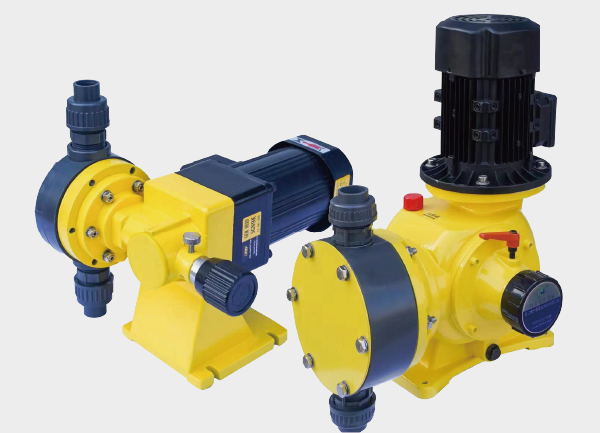
1. Core Functions: Why Chemical Dosing Pumps Are Essential
The core value of chemical dosing pumps lies in solving the problem of “accuracy and stability in chemical dosing,” avoiding process failure, cost waste, or safety risks caused by “dosage deviations” from manual dosing or ordinary pump delivery. Their specific functions can be broken down into three points:
- Precise Metering: Through mechanical or electronic control, the error of the pump’s hourly/minute chemical delivery volume is ≤ ±1% (some high-precision models can reach ±0.5%), meeting strict process requirements for chemical concentration (e.g., drinking water disinfection requires precise control of sodium hypochlorite concentration between 0.3-0.5mg/L).
- Stable Output: Unaffected by small fluctuations in system backpressure (pressure of the target pipeline), the pump maintains a constant flow rate (a characteristic of positive-displacement pumps). This prevents erratic dosing caused by pressure changes (e.g., when adding corrosion inhibitors to circulating water systems, stable dosing is needed to form a uniform protective film).
- Safety & Compatibility: Components in contact with chemicals (pump heads, diaphragms, valves) are made of corrosion-resistant/solvent-resistant materials (e.g., PP, PVDF, 316L stainless steel, PTFE). This allows compatibility with special media such as acids, alkalis, organic solvents, and strong oxidants, avoiding equipment corrosion or medium contamination by chemicals.
2. Working Principles: Key Differences Between Types
Chemical dosing pumps operate on the positive-displacement principle (generating negative pressure to suck fluid and positive pressure to discharge fluid by changing the pump chamber volume). Based on the “driving method for volume change,” they are divided into three mainstream structures, with significant differences in principles and application scenarios:
| Type | Core Structure | Working Principle | Advantages | Suitable Applications |
|---|---|---|---|---|
| Plunger-Type Dosing Pump | Plunger, pump cylinder, check valve | A motor drives the plunger to reciprocate in the pump cylinder: 1. Plunger retracts → pump cylinder volume increases → negative pressure sucks fluid; 2. Plunger advances → pump cylinder volume decreases → positive pressure discharges fluid. Flow rate is controlled by adjusting plunger stroke/reciprocating frequency. | High pressure (up to 10-30MPa), high accuracy | High-pressure scenarios (e.g., adding corrosion inhibitors to oil well heads, adding acid for high-pressure cleaning) |
| Diaphragm-Type Dosing Pump | Elastic diaphragm (PTFE/EPDM), pump chamber, check valve | A motor/pneumatic drive causes the diaphragm to reciprocate and deform: 1. Diaphragm bulges outward → pump chamber volume increases → fluid is sucked; 2. Diaphragm concave inward → pump chamber volume decreases → fluid is discharged. No direct contact between the plunger and pump cylinder, avoiding leakage. | Leak-proof (diaphragm isolates medium from driving parts), strong corrosion resistance | Toxic/hazardous/highly corrosive media (e.g., adding sodium hypochlorite in water treatment, adding formaldehyde in chemical industry) |
| Peristaltic-Type Dosing Pump | Rotor, elastic hose, pump housing | The rotor squeezes the elastic hose: 1. Rotor advances → the squeezed part of the hose forms a “sealed section,” pushing the medium forward; 2. Rotor moves away → the hose rebounds elastically → negative pressure sucks fluid. Flow rate is determined by hose inner diameter and rotor speed. | No medium contact (only the hose touches the medium), sanitary grade | Pharmaceuticals (infusion, vaccine preparation), food industry (additive dosing) |
3. Key Technical Parameters (Core Basis for Selection)
When selecting a chemical dosing pump, it is necessary to accurately match the “medium characteristics” and “operation requirements” of the process. The core parameters include:
- Flow Rate Range: The volume of medium delivered by the pump per unit time (common units: L/h, mL/min). It should cover the “minimum dosing volume” to “maximum dosing volume” of the process (e.g., 0.1-10L/h for small water treatment equipment, 100-1000L/h for large chemical plants).
- Pressure Rating: The maximum system backpressure the pump can overcome (units: MPa, bar), which must be ≥ the actual pressure of the target pipeline (e.g., 0.1MPa is sufficient for dosing in open water tanks, while 1-5MPa is required for dosing in high-pressure reaction kettles).
- Metering Accuracy: The relative error of flow rate (usually marked as ±X% FS, where FS = full scale). High-precision scenarios (e.g., pharmaceuticals, electronic-grade water treatment) require ≤ ±0.5%, while ±1% is suitable for general industrial scenarios.
- Material Compatibility: Materials of components in contact with the medium must match the chemical properties of the agent to avoid corrosion or leaching contamination:
- Strong acids/alkalis (e.g., sulfuric acid, sodium hydroxide): Select PVDF (polyvinylidene fluoride) or PTFE (polytetrafluoroethylene);
- Neutral media (e.g., flocculants, cooling water): Select PP (polypropylene) or 316L stainless steel;
- Sanitary scenarios (pharmaceuticals/food): Select 316L stainless steel or food-grade silicone hoses.
- Drive Method: Choose based on workplace safety and automation needs:
- Electric drive: Suitable for conventional working conditions; can be automatically adjusted via PLC/frequency converter (e.g., remote control of dosing volume);
- Pneumatic drive: Suitable for explosion-proof scenarios (no electric sparks) and flammable/explosive environments (e.g., adding solvents in chemical workshops);
- Hydraulic drive: Suitable for ultra-high pressure and ultra-large flow scenarios (e.g., dosing in large oil pipelines).
4. Typical Application Fields (Core Scenarios in Industry & Daily Life)
The application of chemical dosing pumps essentially revolves around “precise control of chemical concentration,” covering core process links in multiple industries:
- Water Treatment Industry (Most Mainstream)
- Water supply treatment: Add flocculants (PAC, PAM) to precipitate impurities, and disinfectants (sodium hypochlorite, ozone) for sterilization;
- Wastewater treatment: Add acids/alkalis to adjust pH, and decolorants/denitrifying agents (e.g., urea) to reduce pollutant indicators;
- Circulating water treatment: Add corrosion inhibitors and scale inhibitors (e.g., phosphate) to prevent pipeline scaling and corrosion, and biocides to inhibit microbial growth.
- Petrochemical Industry
- Oil extraction: Add demulsifiers to separate crude oil from water, and corrosion inhibitors to protect oil well pipelines;
- Refining process: Add catalysts to regulate reaction efficiency, and desulfurizers to reduce sulfur content in oil products.
- Pharmaceutical & Food Industry
- Pharmaceuticals: Add culture media and antibiotics in sterile workshops, and precisely deliver medicinal fluids in infusion equipment (primarily peristaltic pumps to avoid contamination);
- Food industry: Add sweeteners and preservatives to beverages, and probiotics to dairy products (sanitary-grade materials to prevent leaching).
- Environmental Protection & New Energy
- Flue gas desulfurization and denitrification: Add ammonia water or limestone slurry to absorb SO₂ and NOₓ;
- Lithium-ion battery production: Add electrolytes and binders (high-precision metering to ensure battery consistency).
5. Maintenance & Precautions (Extend Service Life + Ensure Safety)
- Regular Calibration: Calibrate the metering accuracy every 3-6 months using the “weighing method” or “flowmeter method” (e.g., weigh the mass of chemicals delivered by the pump within 1 hour and compare it with the theoretical flow rate). This prevents accuracy degradation due to component wear.
- Medium Pre-Treatment: Filter the chemical agent (install a 100-200 mesh filter) to avoid clogging of check valves or scratches on diaphragms/hoses (e.g., flocculants tend to agglomerate and need to be dissolved and filtered).
- Avoid Dry Running: Ensure the pump chamber and pipeline are filled with medium before starting (especially for diaphragm-type/plunger-type pumps). Dry running can cause diaphragm wear and tear or damage to plunger seals.
- Wear Parts Replacement: Replace wear parts based on usage frequency:
- Diaphragm-type: Diaphragm (1-2 years), check valve core (6-12 months);
- Peristaltic-type: Hose (3-6 months, depending on medium corrosiveness);
- Plunger-type: Sealing ring (6-12 months).
- Safe Operation: Wear protective equipment (gloves, goggles) when handling toxic/corrosive chemicals. Regularly check pump tightness to avoid personnel injury or environmental pollution caused by chemical leakage.
6. Conclusion
Chemical dosing pumps are not “ordinary delivery pumps” but “tools for process precision control”. Their core value lies in achieving strict control of chemical dosing volume through “precise metering,” “stable output,” and “material compatibility,” thereby ensuring process effectiveness, reducing costs, and avoiding safety risks. During selection and use, focus on the three cores of “medium characteristics,” “working condition parameters,” and “automation needs,” and combine with regular maintenance to maximize their application value.



